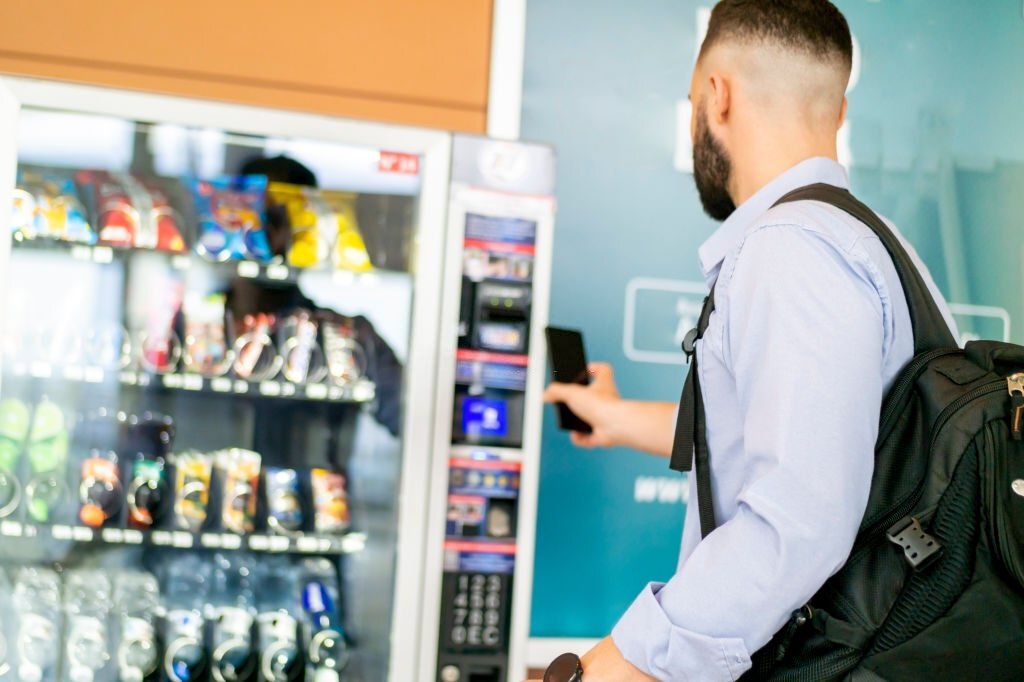How Does Vending Machine Recognize Money? Vending machines have become an integral part of modern life, offering convenience in various settings, from office breakrooms to public transportation hubs. These automated dispensers provide a wide array of snacks, drinks, and everyday items with just a simple coin or bill. But have you ever wondered how these machines recognize and accept the money you insert? In this article, we will delve into the fascinating world of vending machine money recognition, uncovering the inner workings of these ubiquitous devices.

The Anatomy of a Vending Machine
Before delving into the intricacies of money recognition, let’s take a moment to understand the basic components of a vending machine. While the exterior may appear simple, the inner mechanisms are complex and finely tuned to ensure seamless transactions. Key components include coin acceptors, bill validators, and in more recent models, token systems.
How Coin Acceptors Work
Coin acceptors are the heart of any vending machine. They play a crucial role in identifying and accepting the coins inserted by users. The recognition process involves several factors:
A. Coin Size and Shape Detection: Coin acceptors use sensors to determine the size and shape of the coin. This helps the machine differentiate between various denominations.
B. Coin Weight and Thickness Measurement: To further verify the coin’s authenticity, the machine measures its weight and thickness. Each coin denomination has unique physical characteristics that can be detected through these measurements.
C. Coin Materials and Conductivity: Coins are typically made from different materials, such as copper, nickel, and zinc. Coin acceptors use conductivity sensors to identify the material and, by extension, the coin’s authenticity.
The Intricacies of Bill Validators
Bill validators, as the name suggests, are responsible for recognizing and validating paper currency. This process is considerably more complex than coin recognition and involves multiple layers of scrutiny:
A. Optical Recognition: Bill validators use optical sensors to scan the entire surface of the banknote. These sensors capture intricate details, including watermarks, security threads, and microprinting.
B. Magnetic Ink Detection: Many currencies, such as the US dollar, use magnetic ink for security purposes. Bill validators include magnetic sensors to detect the presence of this special ink, further confirming the authenticity of the bill.
C. Ultraviolet (UV) and Infrared (IR) Sensors: Counterfeiters often use sophisticated printing techniques to replicate currency. To combat this, bill validators use UV and IR sensors to detect the presence of fluorescent and infrared inks that are invisible to the naked eye on genuine banknotes.
Token Systems: The Modern Approach In recent years, vending machines have begun to adopt token systems that go beyond traditional coins and bills. These systems leverage advanced technology for payment processing:
A. RFID Technology: Radio-frequency identification (RFID) is used in some vending machines to enable contactless payments. Users can simply wave an RFID-enabled card or smartphone near the machine to complete a transaction.
B. NFC-Enabled Payments: Near-field communication (NFC) technology allows users to make payments by tapping their NFC-enabled cards or smartphones against a designated area on the machine.
FQAs On How Does Vending Machine Recognize Money?
Now that we’ve explored the inner workings of money recognition in vending machines, let’s address some common questions that often arise:
A. Can vending machines accept damaged currency?
Vending machines are designed to accept currency that is in reasonably good condition. If a bill or coin is heavily damaged, torn, or excessively wrinkled, it may not be accepted. Some machines have stricter tolerance levels than others, so the outcome can vary.
B. What happens when a coin gets stuck in a vending machine?
If a coin gets stuck, vending machines typically have mechanisms in place to address this issue. Most machines will either return the coin to the user or push it into a secure collection area to prevent jams.
C. How do vending machines prevent counterfeit money?
Vending machines incorporate a combination of security features, including optical, magnetic, UV, and IR sensors, to detect counterfeit currency. If a bill is deemed suspicious, it is usually rejected and returned to the user.
D. Are vending machines susceptible to hacking?
While vending machines have become more technologically advanced, they are not immune to hacking attempts. Manufacturers employ security measures to protect against tampering, and operators regularly monitor their machines for any signs of unauthorized access.
E. Can vending machines accept cryptocurrencies?
Some vending machines have been adapted to accept cryptocurrencies like Bitcoin. These machines use QR code scanning technology to facilitate crypto transactions, providing an alternative payment method for tech-savvy users.
Conclusion
Vending machines have come a long way from their humble beginnings. Today, these automated dispensers rely on sophisticated mechanisms to recognize and accept money, ensuring seamless transactions for users worldwide. From coin acceptors to bill validators and modern token systems, the technology behind these machines continues to evolve, enhancing convenience in our daily lives.
Key Takeaways
Vending machines employ coin acceptors, bill validators, and token systems to recognize and accept various forms of payment.
Coin acceptors assess coins based on size, shape, weight, thickness, and conductivity.
Bill validators use optical, magnetic, UV, and IR sensors to verify the authenticity of paper currency.
Token systems, such as RFID and NFC technology, enable contactless payments at vending machines.
Vending machines are equipped with security features to detect counterfeit money and deter hacking attempts.
In an era of increasing automation, understanding the intricacies of vending machine money recognition offers valuable insight into the intersection of technology and everyday convenience.
